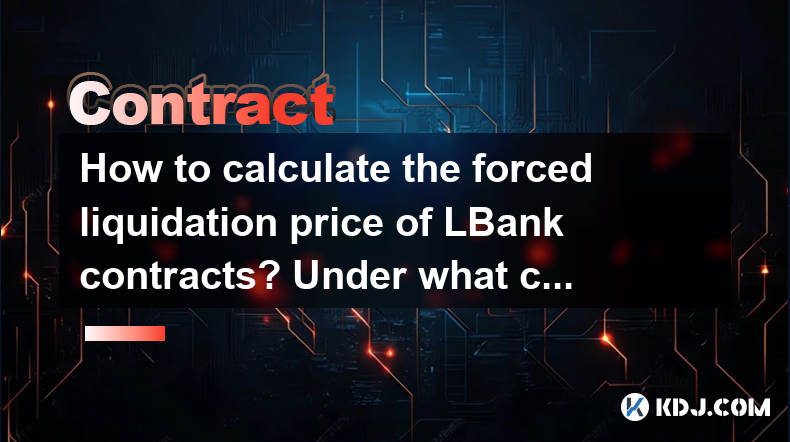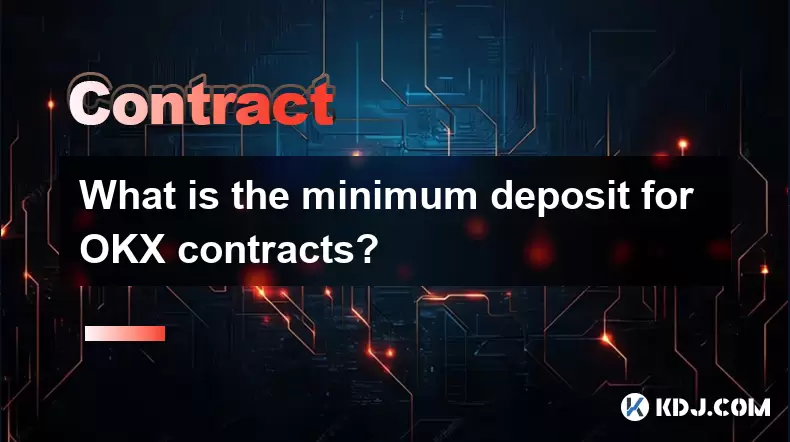-
 Bitcoin
Bitcoin $117500
2.15% -
 Ethereum
Ethereum $3911
6.19% -
 XRP
XRP $3.316
10.79% -
 Tether USDt
Tether USDt $1.000
0.01% -
 BNB
BNB $787.2
2.24% -
 Solana
Solana $175.2
4.15% -
 USDC
USDC $0.9999
0.00% -
 Dogecoin
Dogecoin $0.2225
8.40% -
 TRON
TRON $0.3383
0.28% -
 Cardano
Cardano $0.7868
6.02% -
 Stellar
Stellar $0.4382
9.34% -
 Hyperliquid
Hyperliquid $40.92
7.56% -
 Sui
Sui $3.764
7.63% -
 Chainlink
Chainlink $18.48
10.66% -
 Bitcoin Cash
Bitcoin Cash $582.1
1.88% -
 Hedera
Hedera $0.2601
6.30% -
 Avalanche
Avalanche $23.33
4.94% -
 Ethena USDe
Ethena USDe $1.001
0.02% -
 Litecoin
Litecoin $122.3
2.04% -
 UNUS SED LEO
UNUS SED LEO $8.969
-0.27% -
 Toncoin
Toncoin $3.339
0.86% -
 Shiba Inu
Shiba Inu $0.00001287
4.30% -
 Uniswap
Uniswap $10.43
7.38% -
 Polkadot
Polkadot $3.861
5.08% -
 Dai
Dai $1.000
0.02% -
 Bitget Token
Bitget Token $4.513
3.41% -
 Monero
Monero $267.7
-6.18% -
 Cronos
Cronos $0.1499
4.14% -
 Pepe
Pepe $0.00001110
5.15% -
 Aave
Aave $284.9
8.28%
How to calculate the forced liquidation price of LBank contracts? Under what circumstances will it be triggered?
Forced liquidation on LBank occurs when account margin falls below the threshold, automatically closing positions to prevent further losses; use tools to monitor and calculate this price.
May 03, 2025 at 07:21 pm

Trading contracts on LBank, like on any other cryptocurrency exchange, involves understanding the concept of forced liquidation. Forced liquidation is a critical mechanism designed to protect both the trader and the exchange from excessive losses. In this article, we will explore how to calculate the forced liquidation price of LBank contracts and the circumstances under which it will be triggered.
Understanding Forced Liquidation
Forced liquidation occurs when a trader's position is automatically closed by the exchange to prevent further losses when the account's margin falls below a certain threshold. This threshold is determined by the maintenance margin requirement set by the exchange. When the account balance drops below this level, the position is liquidated to mitigate risk.
Key Components of Forced Liquidation Calculation
To calculate the forced liquidation price of LBank contracts, you need to understand several key components:
- Initial Margin: The amount of capital required to open a position.
- Maintenance Margin: The minimum amount of equity that must be maintained in the account to keep the position open.
- Position Size: The total value of the contract you are trading.
- Entry Price: The price at which you entered the position.
Calculating the Forced Liquidation Price
The formula to calculate the forced liquidation price varies slightly depending on whether you are holding a long or short position. Let's break it down for both scenarios:
For Long Positions
For a long position, the forced liquidation price can be calculated using the following formula:
[ \text{Forced Liquidation Price} = \text{Entry Price} \times \left(1 - \frac{\text{Initial Margin}}{\text{Position Size}} + \frac{\text{Maintenance Margin}}{\text{Position Size}}\right) ]
- Example: Suppose you have a long position with an entry price of $10,000, an initial margin of $1,000, and a maintenance margin of $500. If your position size is $10,000, the forced liquidation price would be:
[ \text{Forced Liquidation Price} = 10000 \times \left(1 - \frac{1000}{10000} + \frac{500}{10000}\right) = 10000 \times (1 - 0.1 + 0.05) = 10000 \times 0.95 = 9500 ]
For Short Positions
For a short position, the forced liquidation price calculation is slightly different:
[ \text{Forced Liquidation Price} = \text{Entry Price} \times \left(1 + \frac{\text{Initial Margin}}{\text{Position Size}} - \frac{\text{Maintenance Margin}}{\text{Position Size}}\right) ]
- Example: If you have a short position with an entry price of $10,000, an initial margin of $1,000, and a maintenance margin of $500, with a position size of $10,000, the forced liquidation price would be:
[ \text{Forced Liquidation Price} = 10000 \times \left(1 + \frac{1000}{10000} - \frac{500}{10000}\right) = 10000 \times (1 + 0.1 - 0.05) = 10000 \times 1.05 = 10500 ]
Circumstances Triggering Forced Liquidation
Forced liquidation is triggered under specific circumstances, primarily when the account's equity falls below the maintenance margin level. Here are the detailed circumstances:
When the Market Moves Against Your Position
- If you are holding a long position and the market price drops below the forced liquidation price, your position will be liquidated.
- If you are holding a short position and the market price rises above the forced liquidation price, your position will be liquidated.
When the Account Balance Falls Below the Maintenance Margin
- The account balance is continuously monitored by the exchange. If it falls below the maintenance margin due to unrealized losses, the position will be liquidated.
When There Is Insufficient Margin to Cover Losses
- If the unrealized losses on your position exceed the available margin, the exchange will automatically close the position to prevent further losses.
Practical Steps to Monitor and Prevent Forced Liquidation
To avoid forced liquidation, traders can take several proactive steps:
- Monitor Your Position: Regularly check the market price and your account balance to ensure you are not approaching the forced liquidation price.
- Use Stop-Loss Orders: Set stop-loss orders to automatically close your position if the market moves against you beyond a certain point.
- Adjust Your Leverage: Lowering your leverage can increase the buffer between your current position and the forced liquidation price.
- Add More Margin: If you see your position nearing the forced liquidation price, you can add more funds to your account to increase your margin.
Using LBank's Platform to Calculate Forced Liquidation Price
LBank provides tools and features to help traders calculate and monitor their forced liquidation prices. Here are the steps to use these tools:
- Log into Your LBank Account: Access your account on the LBank platform.
- Navigate to the Contracts Section: Go to the section where you can view your open contracts.
- Select Your Position: Click on the specific contract position you want to analyze.
- View the Forced Liquidation Price: LBank will display the forced liquidation price for your position based on the current market conditions and your account's margin levels.
Frequently Asked Questions
Q1: Can I manually close my position before it reaches the forced liquidation price?
Yes, you can manually close your position at any time before it reaches the forced liquidation price. This can help you avoid the potential losses associated with forced liquidation.
Q2: What happens to my funds after a forced liquidation?
After a forced liquidation, any remaining funds in your account will be available for withdrawal or use in other trades. However, if the losses exceed your margin, you may end up with a negative balance, which you will need to cover.
Q3: Does LBank charge any fees for forced liquidation?
Yes, LBank may charge a liquidation fee to cover the costs associated with closing your position. The specific fee structure can be found in LBank's fee schedule.
Q4: Can I adjust the maintenance margin requirement on LBank?
No, the maintenance margin requirement is set by LBank and cannot be adjusted by individual traders. However, you can manage your risk by adjusting your position size and leverage.
Disclaimer:info@kdj.com
The information provided is not trading advice. kdj.com does not assume any responsibility for any investments made based on the information provided in this article. Cryptocurrencies are highly volatile and it is highly recommended that you invest with caution after thorough research!
If you believe that the content used on this website infringes your copyright, please contact us immediately (info@kdj.com) and we will delete it promptly.
- Tron's Sell-Off Spurs Altcoin Shift: What's Next for TRX?
- 2025-08-08 08:30:12
- RUVI Presale: Is the Growth Potential Real?
- 2025-08-08 09:10:12
- Sleep Token's US Takeover: Thornhill Rides the 'Even In Arcadia' Wave
- 2025-08-08 08:30:12
- FTT Token's Wild Ride: Creditor Repayments vs. Market Drop - A New Yorker's Take
- 2025-08-08 07:10:12
- Floki Crypto Price Prediction: Riding the Robinhood Rocket or Just a Meme?
- 2025-08-08 07:15:12
- EigenLayer, Restaking, and Ethereum: Navigating the Hype and the Hazards
- 2025-08-08 06:30:12
Related knowledge

What are the specific maker and taker fees on KuCoin Futures?
Aug 08,2025 at 08:28am
Understanding Maker and Taker Fees on KuCoin FuturesWhen trading on KuCoin Futures, users encounter two primary types of fees: maker fees and taker fe...

What is the maximum leverage available on KuCoin Futures?
Aug 08,2025 at 10:21am
Understanding Leverage in KuCoin Futures TradingLeverage in KuCoin Futures allows traders to control a larger position size using a smaller amount of ...

What is the minimum deposit for OKX contracts?
Aug 08,2025 at 07:00am
Understanding OKX Contract Trading BasicsOKX is one of the leading cryptocurrency derivatives exchanges, offering a wide range of perpetual and future...

Where can I find the OKX trading calculator?
Aug 08,2025 at 07:49am
Understanding the OKX Trading Calculator FunctionalityThe OKX trading calculator is a powerful analytical tool designed to assist traders in estimatin...

What are the available trading pairs for OKX futures?
Aug 08,2025 at 08:49am
Understanding OKX Futures Trading PairsOKX is one of the leading cryptocurrency derivatives exchanges, offering a wide range of futures trading pairs ...

Are there any fees for futures settlement on OKX?
Aug 08,2025 at 05:35am
Understanding Futures Settlement on OKXFutures settlement on OKX refers to the process by which open futures contracts are automatically closed or mar...

What are the specific maker and taker fees on KuCoin Futures?
Aug 08,2025 at 08:28am
Understanding Maker and Taker Fees on KuCoin FuturesWhen trading on KuCoin Futures, users encounter two primary types of fees: maker fees and taker fe...

What is the maximum leverage available on KuCoin Futures?
Aug 08,2025 at 10:21am
Understanding Leverage in KuCoin Futures TradingLeverage in KuCoin Futures allows traders to control a larger position size using a smaller amount of ...

What is the minimum deposit for OKX contracts?
Aug 08,2025 at 07:00am
Understanding OKX Contract Trading BasicsOKX is one of the leading cryptocurrency derivatives exchanges, offering a wide range of perpetual and future...

Where can I find the OKX trading calculator?
Aug 08,2025 at 07:49am
Understanding the OKX Trading Calculator FunctionalityThe OKX trading calculator is a powerful analytical tool designed to assist traders in estimatin...

What are the available trading pairs for OKX futures?
Aug 08,2025 at 08:49am
Understanding OKX Futures Trading PairsOKX is one of the leading cryptocurrency derivatives exchanges, offering a wide range of futures trading pairs ...

Are there any fees for futures settlement on OKX?
Aug 08,2025 at 05:35am
Understanding Futures Settlement on OKXFutures settlement on OKX refers to the process by which open futures contracts are automatically closed or mar...
See all articles

























































































